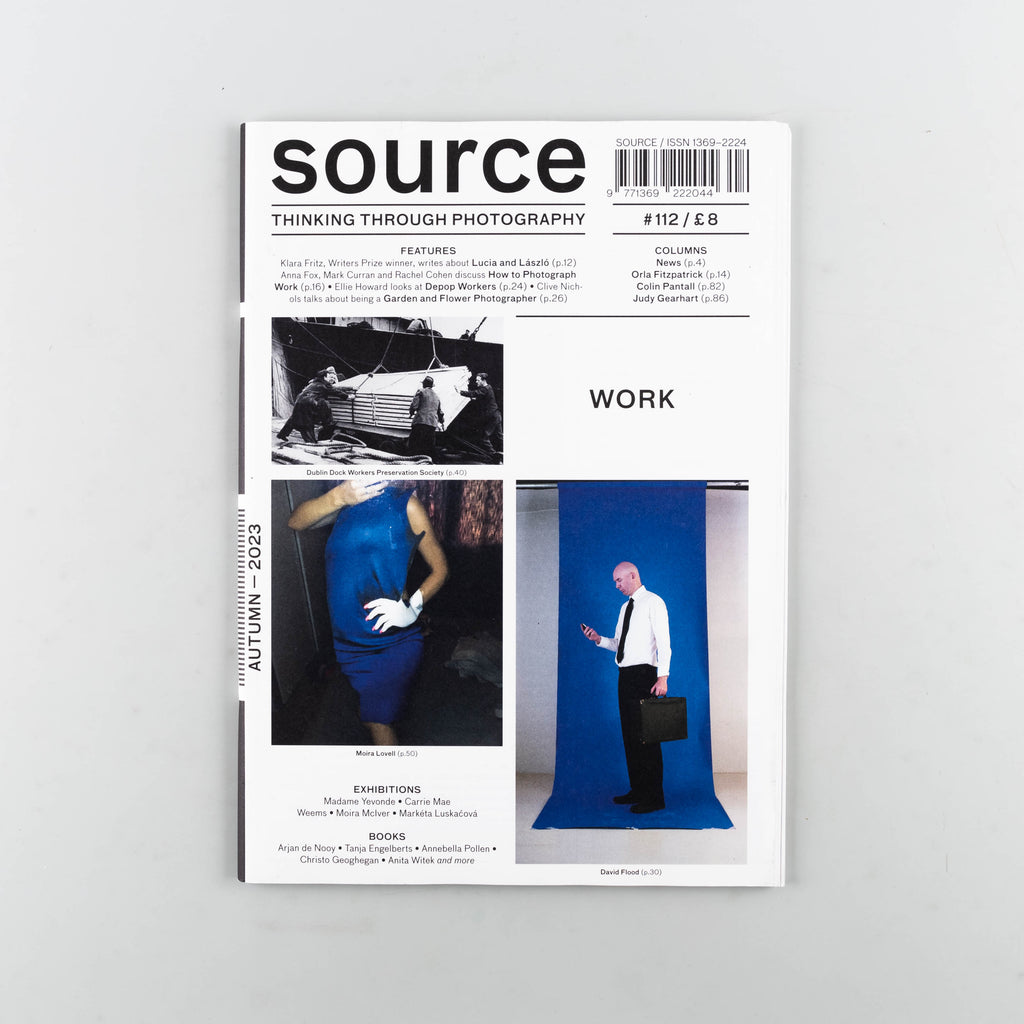
Source #112
WORK
£8.00
This issue of Source is focused on the subject of WORK.
Notes from the editor:
How do you photograph the world of work? In the past, where this involved physical tasks (like unloading ships, see below) perhaps this was obvious, but what about in an office? Then there are... Read More
This issue of Source is focused on the subject of WORK.
Notes from the editor:
How do you photograph the world of work? In the past, where this involved physical tasks (like unloading ships, see below) perhaps this was obvious, but what about in an office? Then there are the relationships between companies and their employees, once mediated by a foreman or middle manager, now perhaps delineated by a non-disclosure agreement. How do you photograph that? The photographers Anna Fox and Mark Curran and the sociologist of work Rachel Cohen talk about negotiating this evolving environment. Cohen describes the changing nature of work, often part-time, insecure and invisible. Fox and Curran talk about their experience of getting access to workplaces to allow them to photograph. They each reaffirm the importance of work as a subject for photographers.
In David Flood’s project, the main character ‘the cage’s keeper’ is an echo from his own past as a corporate employee, while the briefcase he holds belonged to his father. The role of the keeper is to "furnish the cage with the ideology necessary to keep the inhabitants inside it". The photographs are made in Dublin and Helsinki but these business districts are indistinguishable from one another, and countless other cities. Against these backdrops, and drawing on the business worker visualised in 3D stock images, ‘the keeper’ is a model of acceptable behaviour for the white-collar worker in capitalist spaces.
The Dublin Dock Workers Preservation Society holds a growing photographic archive. This gives us a valuable visual history of the workers who maintained the operation of the docks, the work they carried out and the developing technologies that finally led to the demise of the docks they operated for many decades. We showed a selection of photographs from the archive to Belfast-based artist Aisling O’Beirn and Aileen O’Carroll, co-author of The Dublin Docker. Their conversation is an exploration of both the form and the content of the images, from two distinct, but related, perspectives; considering both their aesthetic value and historical significance.
Moira Lovell’s Modelling Selfies (in Paper Outfits) explores how women construct and are constructed by their encounters with the image in the digital age. Lovell finds selfie-like images from internet marketplaces which feature women modelling the second-hand clothing they are selling. Lovell then duplicates and enlarges them to life-size, cutting out the outfits from the sellers’ bodies to create a series of image-templates, which she sticks to her body to use as patterns for fitting, following, imagining, posing, and transforming for the next image. Introducing the work, Eve Forrest notes how "the viewer and photographer enter a cycle of what Lovell names labour and desire, an intricate back and forth, underpinned by late-stage capitalism, and gender politics".
is a quarterly photography magazine publishing emerging photographic work and engages with the latest contemporary photography through news, thoughtful features and reviews of the latest exhibitions and books from Ireland and the UK.
is a quarterly photography magazine publishing emerging photographic work and engages with the latest contemporary photography through news, thoughtful features and reviews of the latest exhibitions and books from Ireland and the UK.